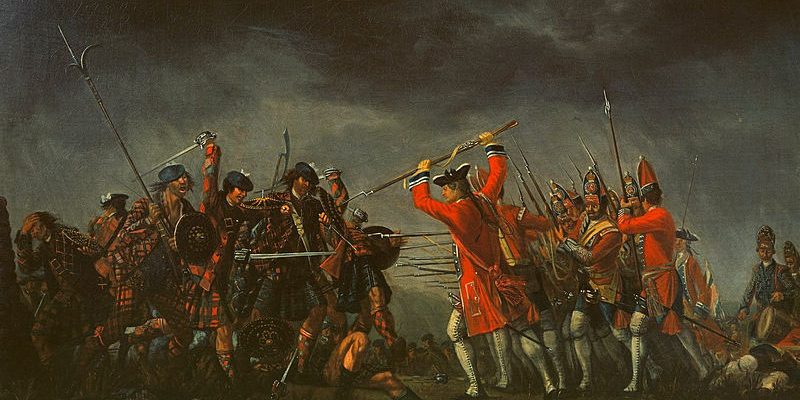Whilst the underground war of Jacobite allegiance was sustained through private, encoded links between a network of faithful followers, armed conflict and the uprisings of 1715 and 1745 turned covertly-held loyalties into open war cries, and secret symbols into the standards of battle.
The white rose, at the heart of the Jacobite cause, was potently symbolised in the white cockade (a knot or rosette of ribbons) worn by Jacobite soldiers in a striking show of unity, strength and belief in their cause. In marked distinction, the opposing Hanoverian forces adopted a black cockade. In a conflict that saw Highlander pitted against Highlander, and sometimes even brother against brother, these visual and symbolic badges of allegiance were also a crucial form of identification in the heat of battle and amongst the many tartan-clad soldiers on both sides.
Distinctive symbolism in the form of heraldic imagery, mottoes, monograms, and motifs of flora and fauna, was readily adopted for military uniforms and equipment. More than simply identifying rank or regiment, this language of symbols was used to proclaim for what and whom each side was fighting. The Hanoverian Grenadiers’ mitre caps were amongst the most striking pieces of clothing on the battlefield, decorated with the interwoven initials of George II and the word ‘Liberty’, reinforcing the claim that they fought for the freedom of Britain. Roses and thistles may be more commonly identified with the Jacobites but they are also British royal emblems, and were worn by Government soldiers in a visual declaration that the Hanoverians were the true and lawful inheritors of the English and Scottish thrones.
Perhaps most stirring of all were the marks of allegiance engraved upon some of the personal weaponry carried into battle. Not only deadly and effective weapons of war, swords with symbolic inscriptions on the blade offered rousing reminders of deeply-held beliefs and the cause for which the Jacobite forces were fighting. Such slogans as ‘GOTT BEWAHR DIE AUFRECHTE SCHOTTEN’ (God save the righteous Scots) or ‘NO UNION GOD SAVE KING JAMES VIII’ inspired courage and commitment to the justness of the cause while offering hope that God was indeed on their side.

Source: In the Name of the Rose: The Jacobite Rebellions, Symbolism and Allegiance (Fairfax House, 2013)
